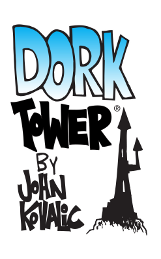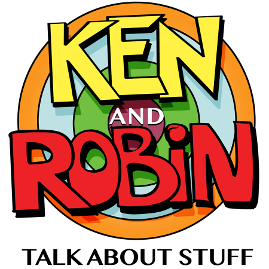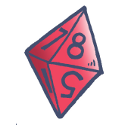Episode 82: Ken and Robin’s Tiny Dolls Talk About Stuff
March 28th, 2014 | Robin
 In the Gaming Hut we again lift the RPG design hood to tinker with PC/NPC asymmetry.
In the Gaming Hut we again lift the RPG design hood to tinker with PC/NPC asymmetry.
Eerie Horror Hut riffing ensues as we sift the story possibilities of 3D-Printed Clone Dolls.
Ask Ken and Robin opens in the middle of a Philippe Marcel question about starting game sessions in media res.
Purely hypothetically, you understand, a certain Ken’s Time Machine segment might tell you who murdered Alexander the Great, and why Ken helped cover it up.
It’s yo ho ho and a pocketful of doubloons as Atlas Games surveys the seven seas from the crow’s nest that is our coveted anchor sponsor slot. Parrot on its shoulder, it orders up another special deal for Ken and Robin listeners, this time in the form of their innovative game of piratical nautical warfare, Pieces of Eight.
After ten years delighting the Swedish gaming scene, our pals at Fenix Magazine now bring the Best of Fenix to English-language GMs and players with their now-active Indiegogo campaign. This project so resounds with Hitean goodness that you have surely chipped in already. But if you haven’t, that burning bird of prey is still passing the hat.
Podcast: Play in new window | Download
















Excellent and very funny tiny doll ideas! (Although I’m really scared of dolls now.)
Yeah! Me too 😀 Especially tiny Ken & Robin dolls 😀
Actually, Gene Wolfe had something very much like that in his last novel, “The Land Across”, which is, als always, a great read.
Ken’s comment about Tamagotchi reminded me of Adam Marek’s story of the same name. There’s an excerpt here.
I have to say that I am a big proponent of PC/NPC symmetry, at least in games that operate in a simulationist/ “the rules of the game are the physics of the world” mode. I don’t need to have every game be that way, but it’s been my general preference in the Traditional game universe. (And I don’t particularly think that ‘villain bonuses’ and similar fingers on the scale violate the rule in the sense I’m using, any more than the fact that there exist NPCs with levels different than the PCs in a D&D game. Or, for that matter, that the Call of Cthulhu rules you mentioned are a problem; the ‘0 sanity versus positive sanity’ is sufficiently digetic and the rule that anyone with 0 sanity is by definition an NPC doesn’t bother me in this regard at all.)
That said, there’s another problem with it that you didn’t touch on, and that is the fact that it is involved in a gaming trilema: PC/NPC Symmetry, mechanics for social interaction, and strong player agency; there’s no way for a set of rules to have more than two of these. Which, since strong agency (defined as ‘nothing other than the supernatural or a disadvantage I have chosen to put on my character sheet can ever make my character act in a way I don’t want them to”) is almost a defining feature of traditional rpgs as opposed to the ‘indie’ world, means that the entire space of social mechanics ends up underserviced. Or else it gets a kludgy exception to the PC/NPC Symmetry general rule, a situation less satisfying than either keeping it as an absoute rule or ditching it altogether.
You know, I hated the fact that DnD is asymmetrical. I noticed it at the time and the fact that RQ used a unified set of mechanics for all sorts of critters and people is one of the major reasons I gave up on the older game.
And it’s the memory of a RQ character (not even one of mine) that makes me hate the idea of ‘mooks’ (a term I learned from FENG SHUI). It was the poor unnamed trollkin who got lucky and killed the example character in RQ2, Rurik the Runelord of Yelmalio. And I tend to believe that knowing the minor minions can get lucky, that they’re not nerfed by the rules is one of the things that keep players from becoming murder hoboes.
I’m quite willing to drive my GM’s Fiat all over the PCs in the interest of keeping the flow going but I remain to be convinced that I need special rules to do it.
To be fair to D&D in its recent form, 3rd edition made the treatment of PCs and monsters much more nearly symmetrical. (I’m insufficiently acquainted with 4th to know if that reversed the change.) Monsters could have abilities that weren’t generally available to PCs, of course, but then the same can be said of Runequest, or any other game which assumes human or near-human PCs.
Something like Champions or GURPS 4th edition, which advertises that you can play anything, if you have the points to pay for it, has to go into those sorts of abilities in more detail. On which subject, to be fair to Champions, the “villain bonus” was simply a slightly cack-handed way of saying “some NPCs are more powerful than a starting PC” – just as some are less powerful, being built on fewer points.
Anyway – a thing to note is that symmetry doesn’t have to mean identical levels of resolution on both sides. That is, a GURPS PC (for example) can function on exactly the same rules as some minor NPC, but the PC maybe get four pages of character sheet, with every skill listed and exact point values calculated, whereas the NPC maybe gets a scrawled two-line note in the GM’s notes, with Will, DX, hit points, a couple of combat skills, and weapon damage, that being all that will come up in the scene as planned. More would be a waste of time – but if the NPC suffers one of those bad cases of the Ascended Extra that happens from time to time, one can always expand those basic numbers out to something more. Likewise, the GM probably won’t track fatigue for the NPC (“he’s unlikely to last long enough to worry”), and so on. Symmetry exists in principle, but its more tiresome implications can be disregarded.
One of the forms of in media res I don’t think you touched on is the Bond Opener. You begin with the team in the middle of a mission which shows what the characters are used to doing, what they are capable of doing and it gives them a chance to show how the characters interact. Perhaps the first bit of TRUE LIES is a better model for that.
And closely related to that is the False Start in which you go on a routine mission and only in the course of it do you begin to discover What Is Really Going On. The standard opening adventure (the one in the core book) to NIGHT’S BLACK AGENTS is just that.
One of the things that they tell you in standard advice on how to write good is that you ought to begin a story before the beginning to establish the status quo. That’s less important in RPGs because the players usually know who and what they characters are, what they do, and what they are capable of from game premise, game mechanics, and discussions surrounding party design and character generation.
Huh. That’s interesting. Because one of the other things that they tell you is “delete chapter one” and start after the build-up, when the serious story begins.
I should mention that I misspoke, and refer to Peter Green as the master of hostile Alexander biographies.
A.B. Bosworth is a different Alexander biographer, who is also worth reading.
Okay, that makes sense. Was looking it up to post about and was horribly confused seeing a Peter and a Boswell, but no Peter Boswell.
Interestingly, both “assembling clone-personalities of people from social media content” and “storing memories in an external drive for later playback” have been done as stories on the Black Mirror miniseries.
Thank you for answering my question, this is really awesome.
I now better understand the goal of using in media res, cutting as far into the scene as possible can certainly accelerate the pace.
This make me thing that I could use that for not just for the first scene of the session but all of the other scenes which may have a tedious beginning.
I have been experimenting with doing in media res in my current campaign after posting my question. I have to agree with both Ken and Robin that it very important to give the players the ability to get an opportunity to buy in the chain of events they are propelled into either via a campaign structure or the ability to be participate in explaining why they are there. In my current L5R campaign, the PCs are following the order of their clan or family daimyo which makes this buy in easy and integrated into the campaign. Indeed, the PCs are wherever the daimyo ordered them to go.
There’s a great Call of Cthulhu scenario – “A Painted Smile” by Richard Watts – that fits in well with the evil doll theme. I’ve enjoyed running it immensely.
Talking about creepy (dolls), I think you should definitely mention/expand upon companies like the one below using Human organs for everyday things.
http://www.humanleather.co.uk/ – guess what they use!
[…] so I hope to have something in the next issue, which is supposed to be released shortly. A recent Ken and Robin Talk About Stuff episode spurred me to start yet another piece for the Oath as well. I hope to have news about the […]
Thank you for all your effort on this blog. Betty loves making time for research and it’s obvious why.
Most of us learn all regarding the lively tactic you render priceless tactics
by means of the web blog and in addition welcome response from people about this concept then our
favorite girl is really understanding a lot of things. Enjoy
the remaining portion of the new year. You’re performing a terrific job.